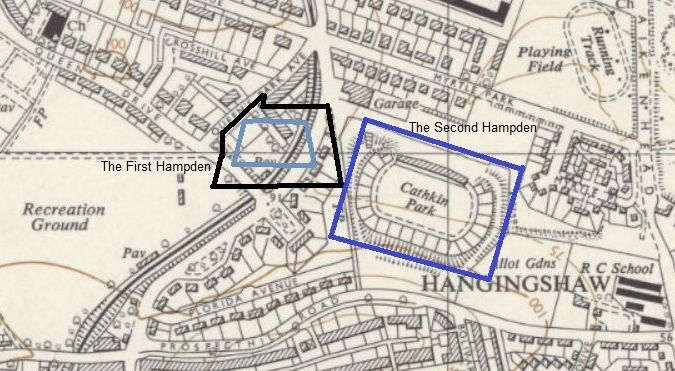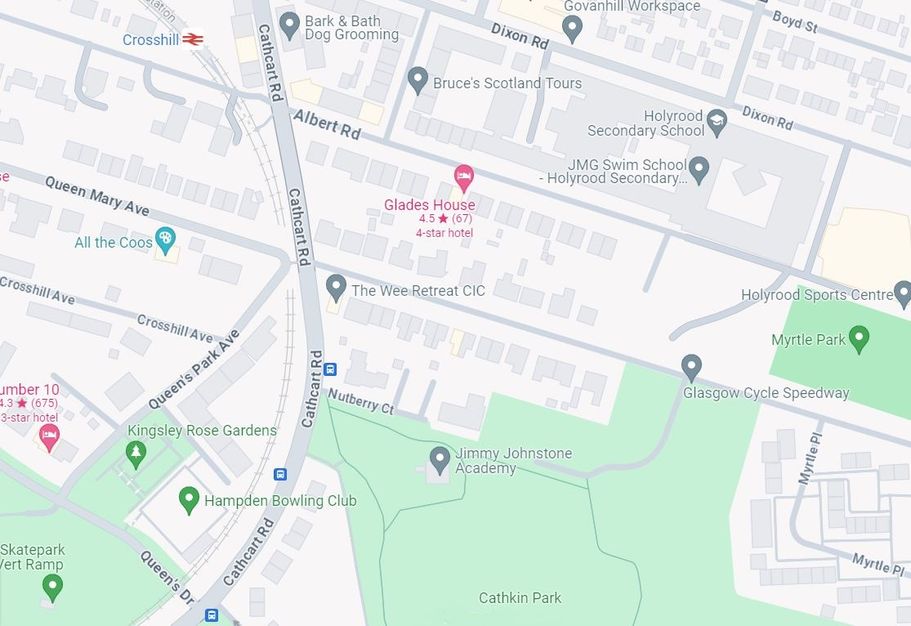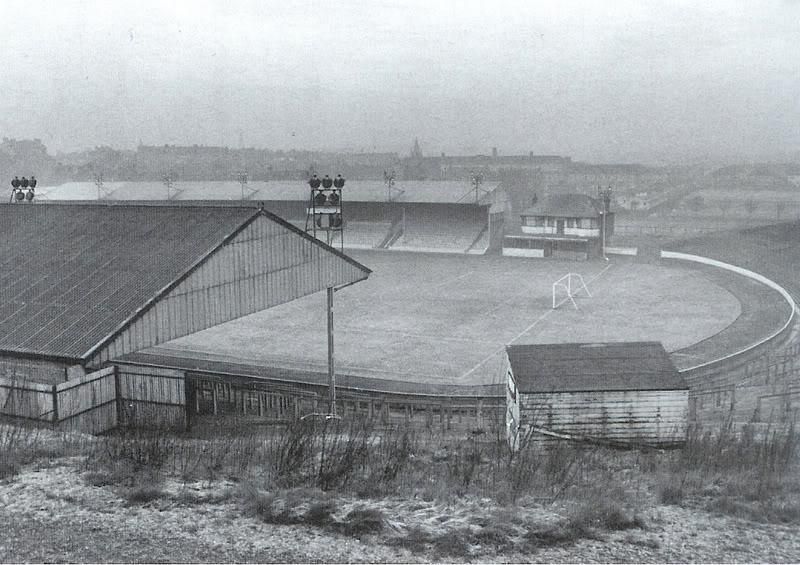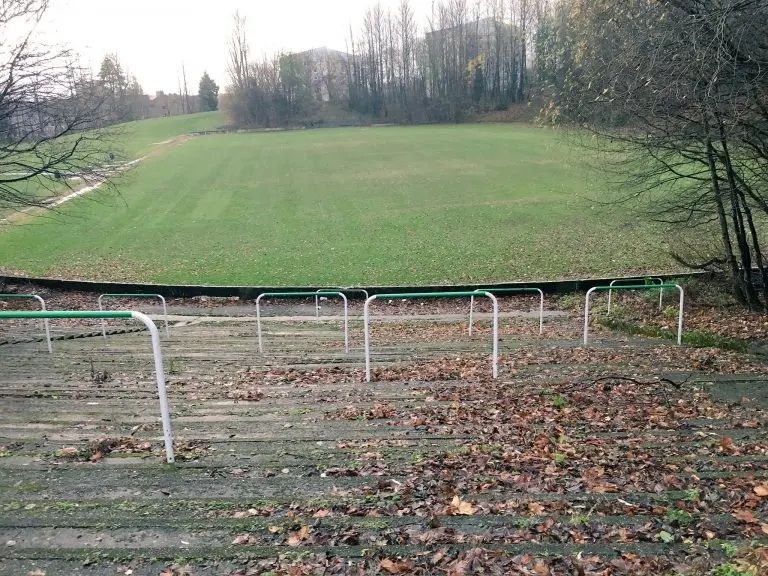The 2nd Hampden - Cathkin Park

It was not as if, as Queen's Park had been required to vacate its first permanent ground, they had to go far. Chances are that, whilst the boundaries of each are not known exactly, they could walk east directly from one to another; the one being the first Hampden Park, the other being the second, or Cathkin Park II as it would become known under future owners. The Spiders would be resident for two decades before moving on with Third Lanark from its first Cathkin just up the road then taking over.
The site of Hampden Park II is itself something of a quandary; a chicken and egg. It is unclear if the parkland was there already or that it has evolved as a result of, first, a football ground being laid, then that developing into a stadium before it too has been erased almost entirely since The Thirds 1967 dissolution. The pitch remains, as does now over-grown terracing on three sides, but what once almost filled the whole of the whole open area now barely covers half, a peak crowd capacity of 50,000 reduced today to at maximum hundreds and in reality for the amateur players that use it a few tens.

The rise and fall of Hampden II and therefore Cathkin II began on 18th October 1884 with a crowd of 7,000 watching a friendly against Dumbarton, a 0-0 draw. The first Scottish Cup game would be the following week, a home defeat 3-4 to Battlefield, with the ground next used for the Cup Final and its replay the following year, 1885, as first 3,000 and then 5,000 watched Renton eventually beat Vale of Leven to take the trophy. In fact the move of Queen's Park would coincide with the rise of Hampden II but the decline in stages of the club itself. It would win the Scottish Cup at home in 1886, at Ibrox in 1890, be runner-up to Celtic in 1892 at Ibrox once more, the following year reversing the result at the same venue. But it would not join the nascent Scottish League in 1891, only entering its First Division, but directly so, in 1900, remaining until 1922, an amateur club in an otherwise professional sea.

And whilst Queen's Park struggled with the new reality on the field Hampden II was also to decline. Having on opening become the go-to venue for Cup Finals it also took on the same mantle for home international games. However, that was from 1890 to stutter for the former and after a crowd of 26,000 change for the next decade and half for the latter. The 1891 Cup Final was staged there, the next was only in 1894. Then there was a wee run from 1897 t0 1899 inclusive before a gap to 1904, by when the venue was a third Hampden, this whilst internationals did not return until 1906.
The reason for Hampden II travails has to lie with the non-engagement of Queen's Park with the then new Scottish, footballing reality. Equally eventual re-engagement was to produce a further reality with the club still having a role but one where Hampden II became surplus, indeed, an impediment.
Queen's Park F.C. began the move from Hampden II in 1899. The club had requested leave for expansion and had been knocked back so it turned it thoughts to a new stadium and land a third of a mile away, the purchase of which was completed that November. Construction was to take three years with the 1902 Ibrox disaster, the collapse of wooden stands and the subsequent restrictions on entry to all grounds, extending the time but ultimately helping the cause. The design was strengthened as a consequence, the new stadium opened in August 1903 and the capacity only gradually built up. 11,000, came to watch that first fixture, 64,000 the 1904 Cup Final, almost 103,000 the 1906 England-Scotland match.

Meantime Hampden II in a sense got lucky. The original Cathkin, home of Third Lanark since 1872 and the original drill-ground of the 3rd Lanarkshire Rifle Volunteers, was five hundred yards to the north. Moreover, the final links to the regiment were being severed. The club would change its name officially that same year. In addition it had been and was firmly mid-table, financially sound and ready for a move, in fact to expand. Cathkin I had taken 15,000. That might be rapidly doubled at Cathkin II.
But all that was to be as a famous club began on a path to extinction. The story is well-known; an early but not final one of asset-stripping by rapacious, unprincipled owners. Almost sixty years on the results are for all to see but do not change the fact that, before it is too late, it is beholden now on the Scottish, footballing community for our and the wider, global "soccer" heritage, for it is one and the same, to hold precious and conserve what we still have.